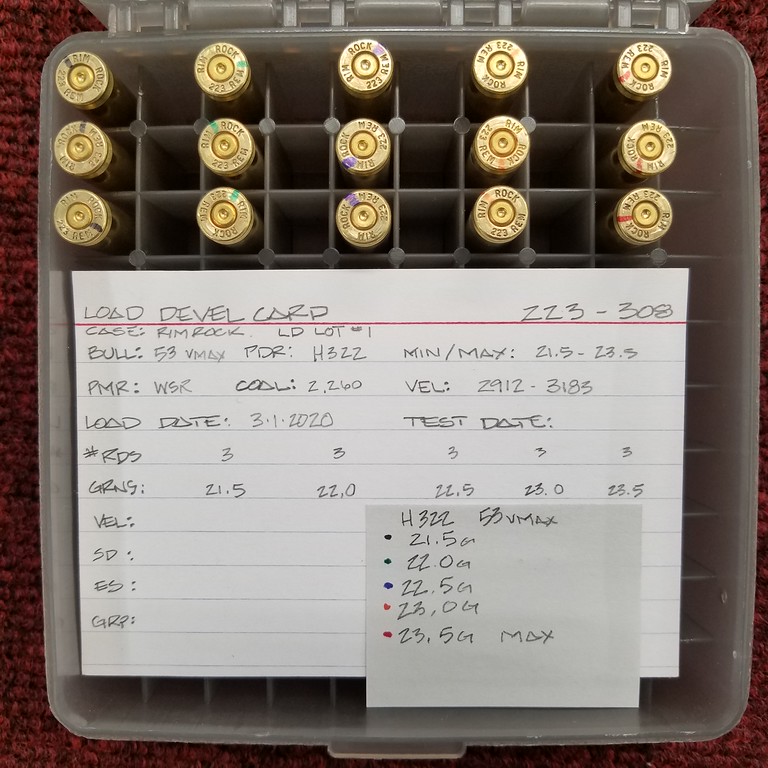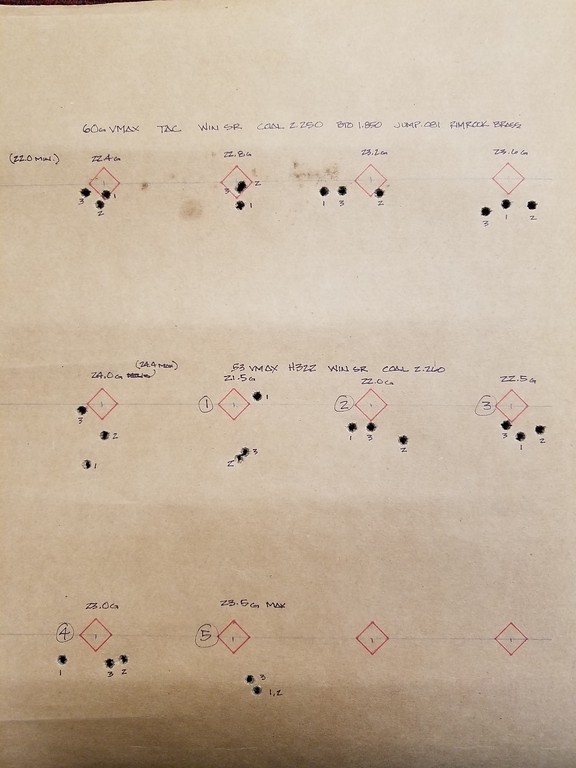The last time I loaded for CF rifle was in the 80's so basically I'm starting from scratch. Tikka Varmint T3x .223 1:8T.
This is my first attempt at load development for the gun, thus the .4-.5g charge splits. Rifle and myself have shot sub .5-.6" 5 and 10 shot groups with FGMM 69SMK's comfortably.
Here's the loads and target from today. What is the target saying to the experienced eyes here?



Temp was upper 40's, winds 3-4mph, and barrel was given 5+ mintues between 3 shot groups to cool.
This is my first attempt at load development for the gun, thus the .4-.5g charge splits. Rifle and myself have shot sub .5-.6" 5 and 10 shot groups with FGMM 69SMK's comfortably.
Here's the loads and target from today. What is the target saying to the experienced eyes here?



Temp was upper 40's, winds 3-4mph, and barrel was given 5+ mintues between 3 shot groups to cool.













